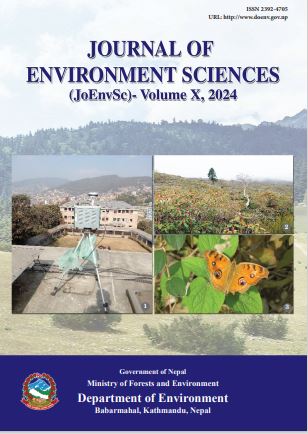Status of Regeneration in Burnt and Unburnt Sites of Chuliban Community Forest, Dhankuta
DOI:
https://doi.org/10.3126/jes.v10i1.66908Keywords:
Diversity, Forest fire, Seedling, Soil propertiesAbstract
Several forest fires occur in forests of Nepal causing loss of life and property, that is visible, but the loss of forest’s health has always been in shade. It is essential to determine the ecological health of fire-affected forests to save them from degradation. This study has assessed the status of soil properties (soil pH and moisture), regeneration and phytosociological parameters of burnt and unburnt sites in Chuliban Community Forest, Dhankuta. Burnt and unburnt sites were identified by site survey, and simple random sampling was adopted for forest and soil sampling. There was a significant difference between soil pH and moisture values in burnt and unburnt sites (p=0.029 for soil pH and p=0.002 for soil moisture). Both sites dominated by Pinus roxburghii showed fair regeneration as a whole, however the burnt site recorded no seedlings of Pinus roxburghii while the unburnt site recorded 208 seedlings of it. Soil moisture was positively correlated with number of seedlings (r=0.203, p=0.01) whereas the correlation of soil pH and number of seedlings was moderately positive (r=0.013, p=0.54). Burnt and unburnt sites had Shannon Diversity Index 3.12±0.18 and 0±0, and Simpson’s Diversity Index 0.34±0.08 and 1±0 respectively. Though burnt site recorded higher diversity, the tree density was low as a result of chopping of dried and injured trees affected by forest fire. Overall, the results showed that soil properties, regeneration and phytosociological parameters were altered due to frequent forest fires at burnt sites, and the site is in need of special attention and restoration programs.




